Chinese Ancestor Portrait Scrolls
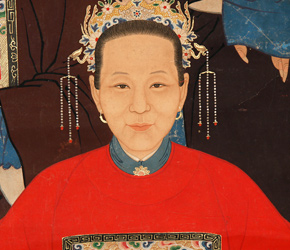 |
|
"Chinese ancestor portraits came into vogue during the late-Ming (1368-1644) dynasty. Before the fall of the Qing dynasty in 1911, Chinese ancestor paintings were rarely available for purchase or exhibited publicly. Most authentic Chinese ancestor portraits that survive today stem from the Qing Dynasty"
The Chinese have a deep connection and profound admiration and affinity for their ancestors. They believe death does not sever a person’s relationship with the living, and if ancestors are properly honored in family rituals they will bring the living health, long life, prosperity and children, who in turn, will someday similarly honor their parents.
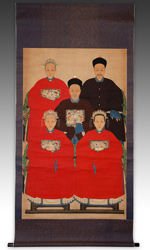 |
|
In Imperial China, it was a sacred family duty to care for the spirits of deceased ancestors. Food offerings were commonly placed before commemorative portraits commonly referred to as "ancestor paintings." These were painted specifically for use in ancestor worship and it was believed the power of the living person resided in their portrait after death. Most authentic ancestor portraits that survive today stem from the Qing (pronounced Ching) Dynasty, 1645-1911. Almost universally, the artists remain unknown, since the ancestor was meant to be the focus, not the person who rendered them.
Ancestor portraits almost always depicted their subjects in a nearly live-size frontal pose, most often seated in some sort of throne with a lavish carpet at their feet. Typically, they would be wearing semiformal gowns with insignia that proclaimed their rank or status. The only differences are gender-related. Women’s feet, considered the most erotic part of the female body, were always hidden; and more often than not women’s hands were hidden as well.
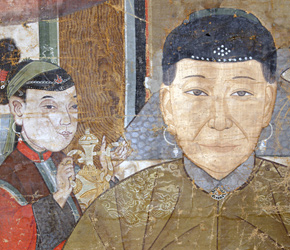 |
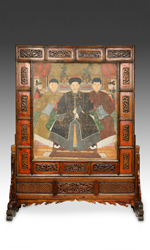 |
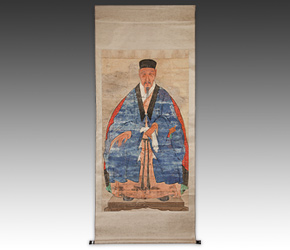 |
Although the costume worn by the ancestor could indicate court status and social position, the most important part of the portrait was the face. All ancestors were painted with virtually the same expression- a symbolically somber and detached look- to suggest some sort of objective, otherworldly status. It has been argued that great care needed to be taken when depicting the face since the Chinese believed that capturing the likeness was crucial for the portrait to be able to function as a ritual object. If the portrait did not capture the likeness, it was said that all future prayers would go to someone else’s ancestor, a tragedy at best.
Nonetheless, accurately depicting the facial features of the deceased posed a problem for artists because most portraits were painted posthumously. In the case of royalty, portraits made during the ancestor’s life could be used as a model. On some occasions, the artist either saw or was familiar with the deceased. Sometimes, they relied on the visage of a family member who closely resembled the deceased. Most often, the artists showed relatives books of drawings depicting various shapes of eyes and other facial features, much like a contemporary police artist does when attempting to create a composite picture from crime witness descriptions. The result is that most ancestor portraits do not depict exact likenesses of ancestors. They are more like caricature than portraiture.
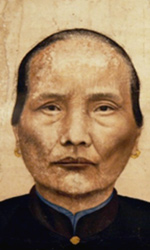 |
|
However, the face shown on the right (in detail) from the ancestor portrait below, is clearly an exception to the rule. Exceptional care was taken in depicting this face. It is almost photographic in nature; so real in fact, it suggests the artist was academically trained and the subject actually sat for the artist. Could this be? The answer is yes, but if this is so, it represents an exceptionally rare occurrence – the idea that someone would sit for this type of portrait prior to their demise. Another idea is that the artist worked from a photograph, as this medium was introduced in the mid-1800s. Yet, this is unlikely, as the development of photography actually led to the demise of ancestor portraits because people were photographed rather than painted. Regardless of how it came to pass, however, the overt realism shown in this particular depiction is rare and unusual.
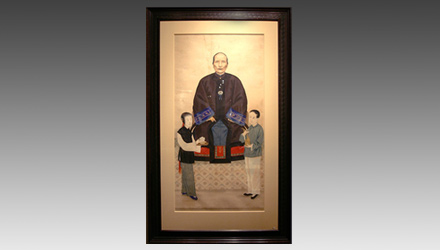
|
|
Chinese ancestor portraits came into vogue during the late-Ming (1368-1644) dynasty. Before the fall of the Qing dynasty in 1911, ancestor paintings were rarely available for purchase or exhibited publicly. Most remained in the hands of family members, languishing in relative obscurity, replaced by the authenticity and exactness of photography. Yet, portraiture exerts a strong pull on the human imagination, and ultimately, connoisseurs of Chinese art recognized the compelling presence and often exquisite quality of ancestor portraits. Today, they are recognized as a significant and unique Chinese art form, appreciated by audiences far greater than any ancestor might ever have imagined.
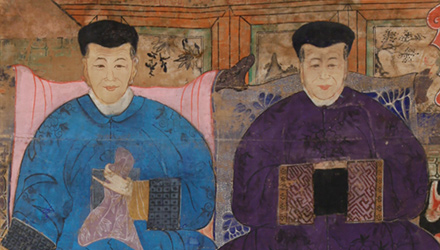
|
|
Download this Article: Chinese Ancestor Portrait Scrolls.pdf